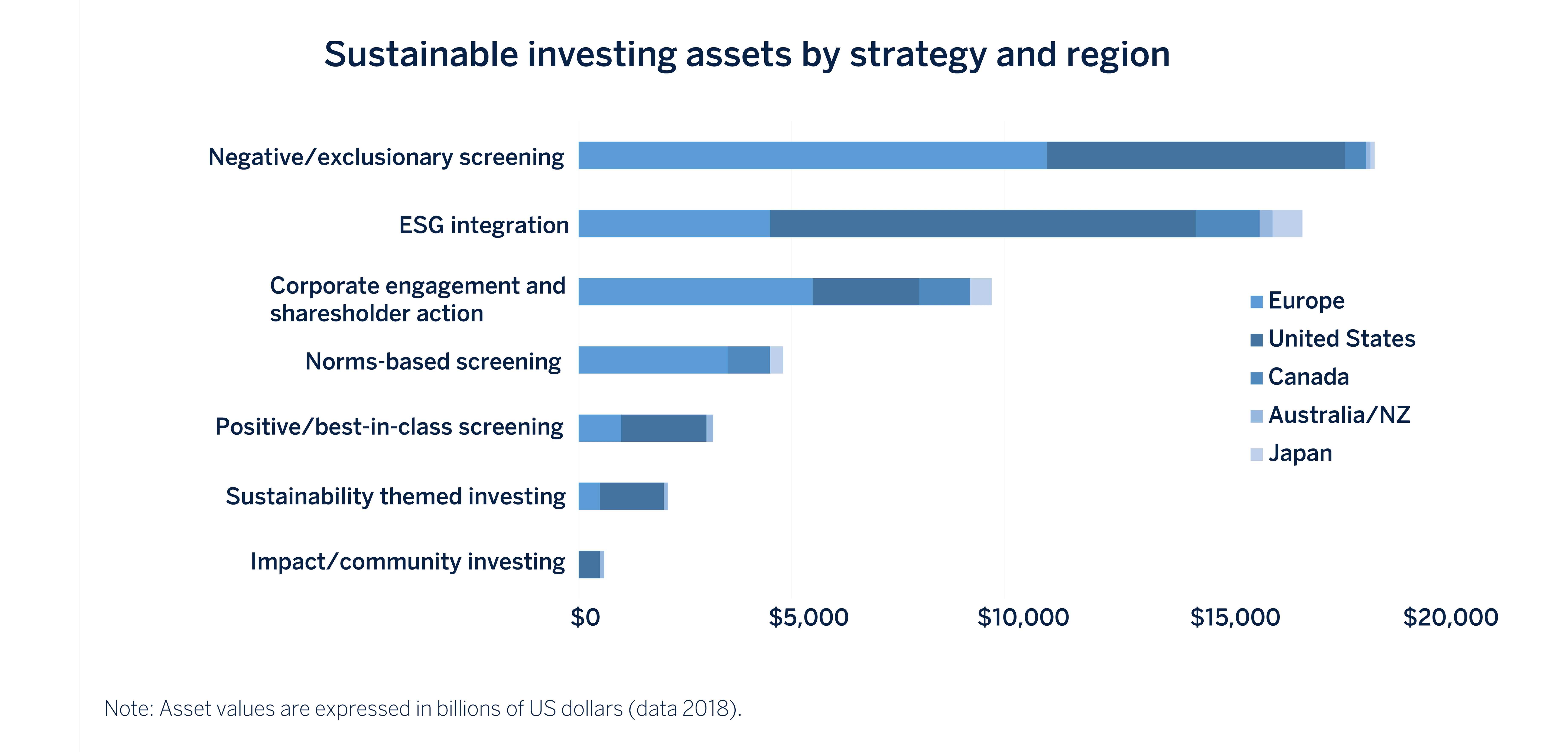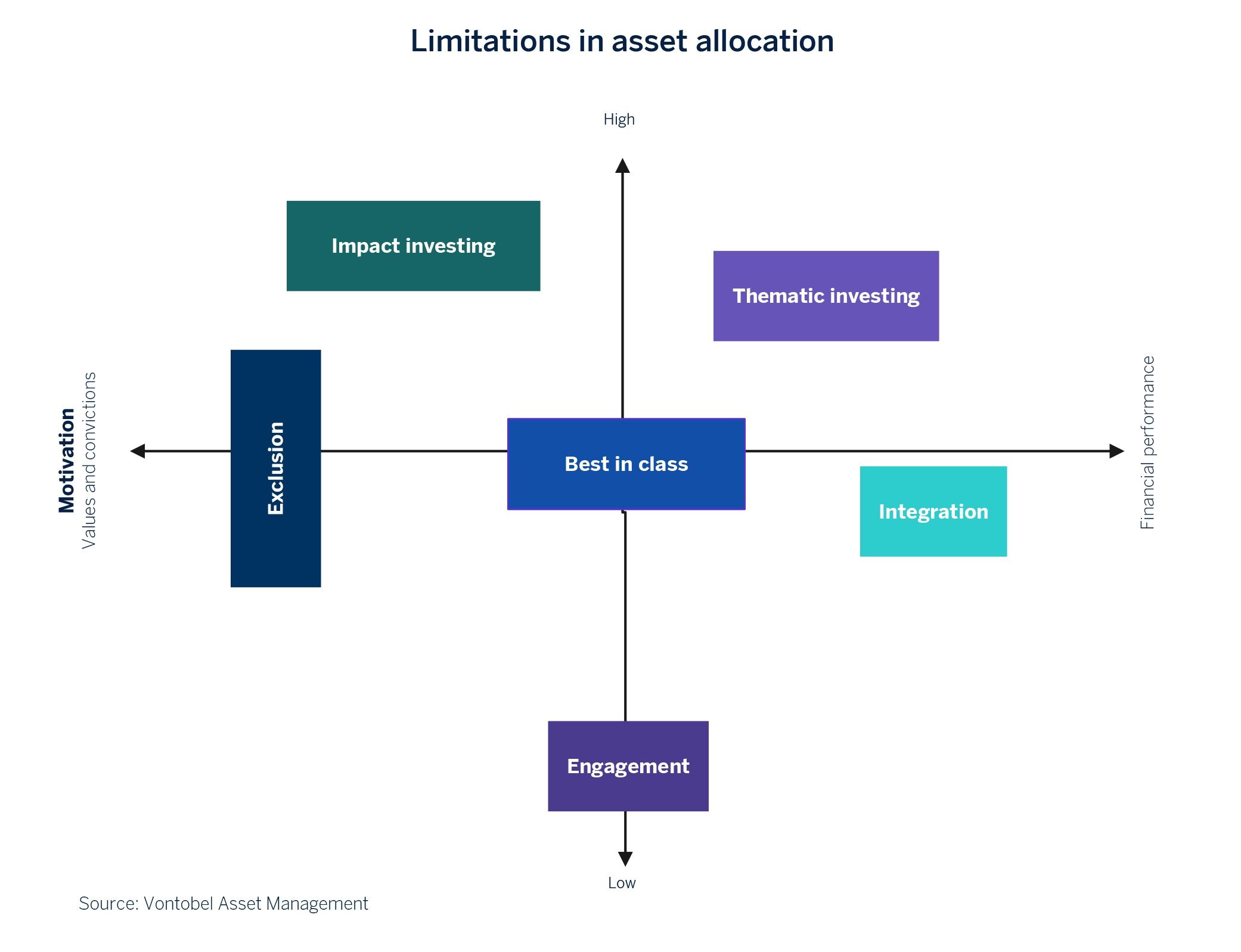Understanding the socially responsible investing


Socially responsible investing post COVID-19
One of the benefits often attributed to socially responsible investing is its strong defensive nature, something that we've been able to examine during the recent Covid-19 crisis. This article analyses that aspect and the reaction of investors when it comes to allocating their assets.
It’s no secret that socially responsible investing now occupies centre stage amongst investors and asset managers.
Just over a month ago, we analysed this trend from two perspectives: performance and volume of capital allocation by investors compared with traditional assets.
In this article, we explain another key dimension of this trend: How can we implement socially responsible investing processes?
There are six aspects to consider:
1. Exclusion
This consists in avoiding companies or sectors that are regarded to be controversial because of their detrimental impact on society and/or the environment. Exclusionary screening can be performed on several levels:
• Product: weapons, tobacco, gambling or fossil fuels
• Activity: coal or oil production
• Standards: companies with sanctions or embargoes
• Behaviour: companies embroiled in corruption or human rights violation scandals
2. Integration
Asset managers reformulate their investment process from scratch. They do this by including new mechanisms to measure the degree of sustainability of their investments, this being an efficient way of generating profitability and adjusting their level of risk.
They are leveraged on external data providers that measure different ratios:
• Environment:
- Energy consumption
- Paper consumption
- Water consumption
• Social responsibility:
- Percentage of women in management positions
- Staff redundancy ratio
• Governance:
- Size of management team
- Percentage of independent directors
3. Engagement
Major asset managers are often the main investors in companies. This puts them in a privileged position when it comes to encouraging companies to implement changes that will make them more sustainable in the future. One of the clearest examples of this is when asset managers vote at annual general shareholders’ meetings.
4. Best in class
This methodology consists in only choosing companies with the best sustainability ratios in each sector, based on data provided by external sources.
5. Thematic
In this case, we are not talking about traditional funds but vehicles that focus solely on investing in specific trends. This leads to portfolios focused on topics such as climate change, renewable energy, water or innovation in sectors such as health.
6. Impact investing
In this case asset managers raise capital to finance specific projects aimed at improving infrastructure, education, healthcare, employment opportunities or economic development in depressed geographical regions. The focus is clearly on generating a positive impact for society over and above the end profitability.
What are the main strategies used by the asset management industry?

Source: GSIA
In conclusion, there is no single strategy that is better than all the others because they all pursue different goals. For example, as we move from exclusionary screening to impact investing, we increase both the degree of sophistication and the ethical component of the investment approach.
The chart below shows the connection between the different strategies in terms of expected return and ethical motivation of the investment

Do you have any questions about this article? Write to us.
For further information, please contact your Investment Advisor.
Related news
-

The importance of living in a sustainable world
If there is a fact that shows us the importance of living in a sustainable environment and focusing on the environment is that 29 July was the Earth Overshoot Day, i.e. the day when humanity consumed all the resources available for that year. The current pace is increasing and growing exponentially every single year.
-

Sustainable financial investment: Plastic waste treatment
Sadly, plastic debris has become frequent in marine life, where plastic is found in the stomachs of cetaceans, birds, and fish















